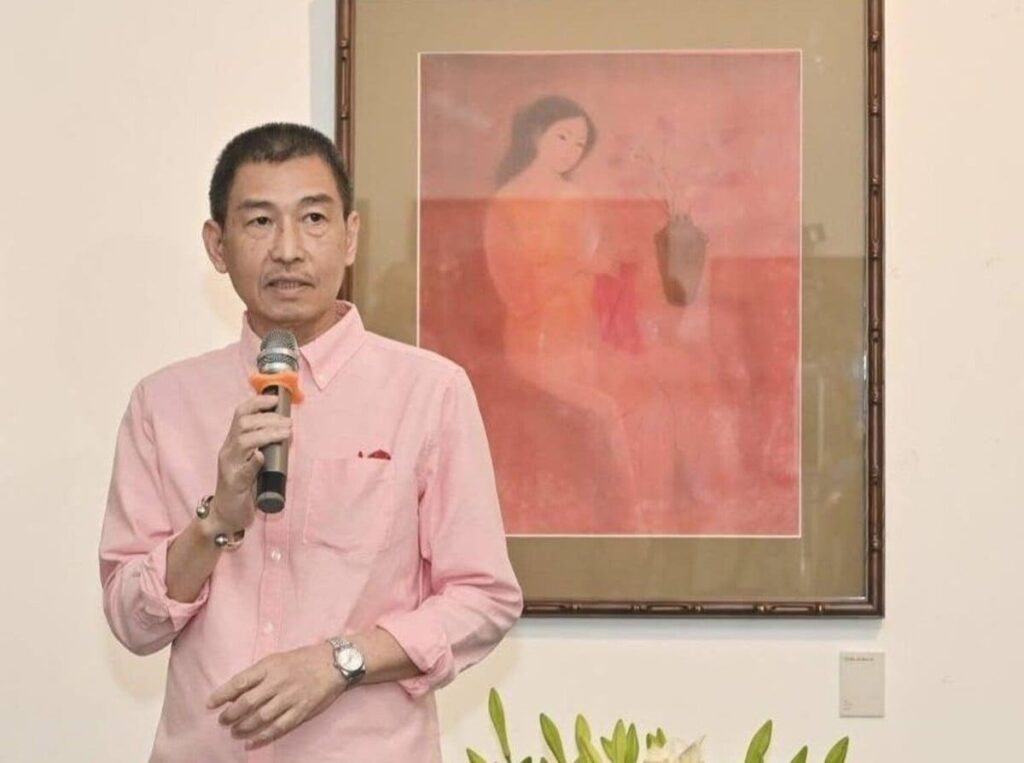Lê Thiết Cương has become a symbol in the Vietnamese art scene, not only for his exceptional talent but also for his authentic, unpretentious artistic lifestyle. The artist Lê Thiết Cương, with his journey from minimalist brushstrokes to profound philosophies on creativity, has left an indelible mark on the public consciousness. In the increasingly diverse landscape of contemporary fine arts, delving into Lê Thiết Cương satisfies artistic passions while prompting reflections on the essence of creation. This article guides you through the biography of Lê Thiết Cương, his unique artistic style, and his representative works, honoring the legacy of an artist who lived fully immersed in beauty. His minimalist approach, often infused with Zen influences and subtle abstractions, resonates deeply in Vietnamese art, where his pieces evoke introspection and cultural continuity.
Biography of Artist Lê Thiết Cương: From Artistic Childhood to Creative Odyssey
The biography of Lê Thiết Cương is the tale of an art enthusiast raised in a family brimming with cultural richness, relentlessly seeking self-identity through painting. Born on August 13, 1962, in Hanoi, Lê Thiết Cương is the son of poet and screenwriter Lê Nguyên and cinematographer Đỗ Phương Thảo—prominent figures in Vietnam’s literary and film circles. From childhood, he was enveloped in a creative atmosphere where poetry and visuals intertwined, nurturing his passion for drawing. This early immersion in a household of intellectuals and artists laid the groundwork for his lifelong dedication to the arts, fostering a sensitivity to form, color, and narrative that would define his oeuvre.
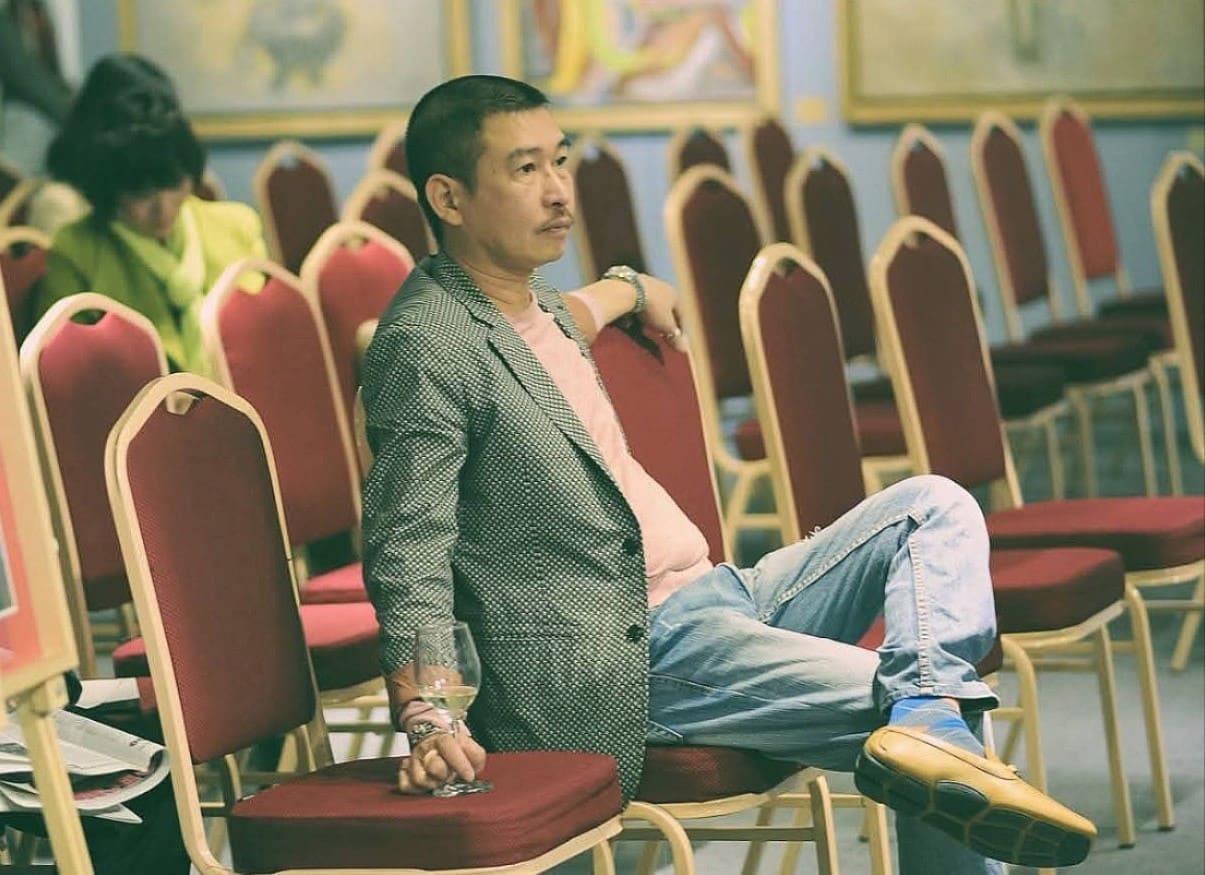
Early Years and Artistic Connections
The life of artist Lê Thiết Cương began with the typical challenges of the 1960s generation in Vietnam. After high school, he served in the military from 1982 to 1984—a period when many young artists had to shelve their brushes to confront harsh realities. Yet, these experiences forged his resilience and offered a profound perspective on existence, which later manifested vividly in his artworks. The discipline of military life, combined with the raw emotions of post-war recovery, instilled in him a grounded approach to abstraction, where simplicity became a vehicle for complex human truths.
- 1985–1990: Student Days at the University of Theater and Cinema: This marked a significant turning point in Lê Thiết Cương’s biography. He studied set design for the first two years and delved into animation for the subsequent three. Beyond technical drawing, he absorbed storytelling through visuals, infusing his later paintings with a narrative subtlety that elevates them beyond mere aesthetics.
- Influence from Mentor Đặng Đình Hưng: Post-military service, Lê Thiết Cương frequently visited poet Đặng Đình Hưng—father of pianist Đặng Thái Sơn. It was Hưng who “opened his eyes” to minimalism, teaching him that art is a journey back to the self, much like a monk’s return to essence. This mentorship was pivotal, encouraging Cương to strip away excess and embrace the power of restraint.
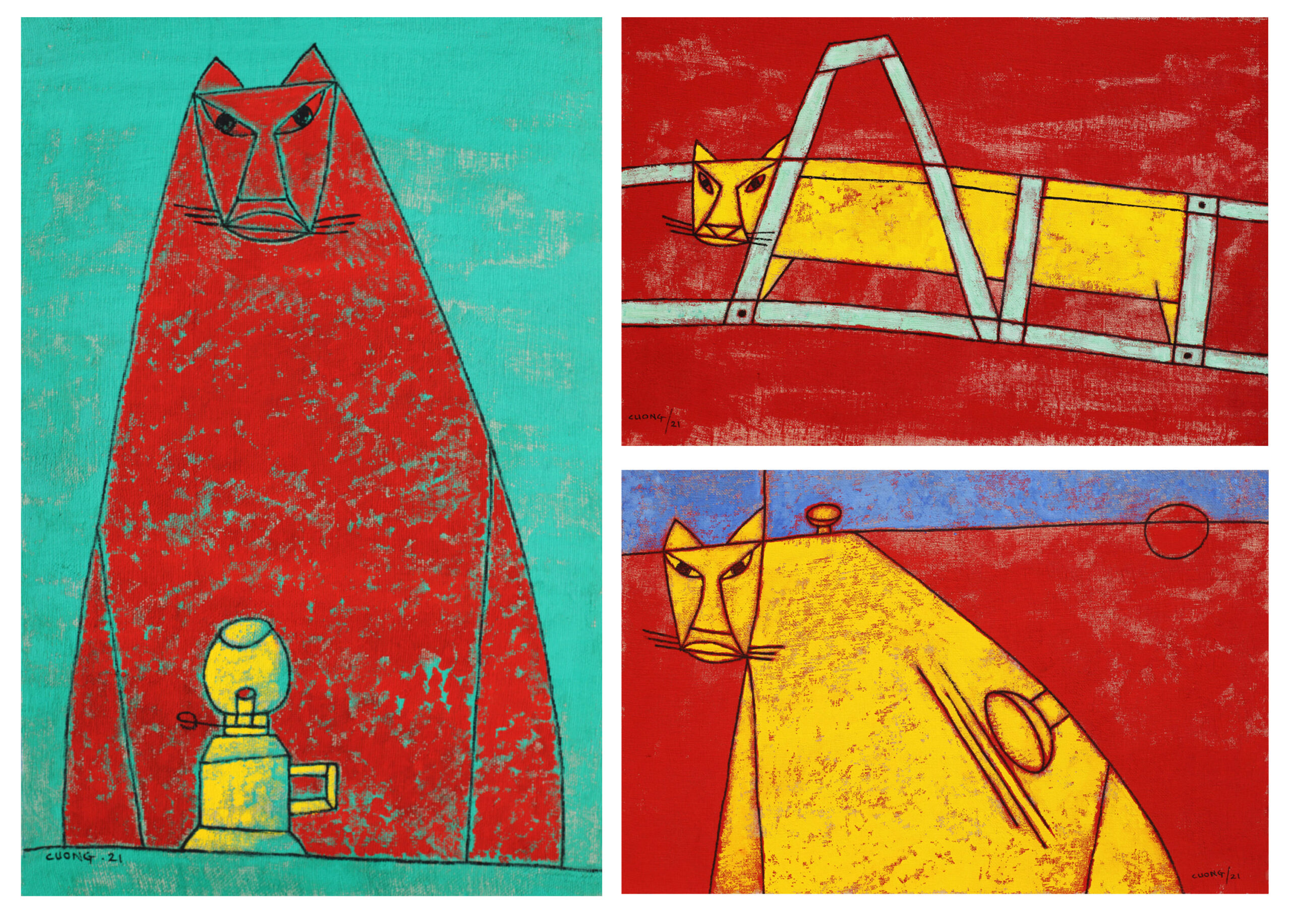
From 1990 onward, Lê Thiết Cương pursued a freelance artistic career, sustaining himself through painting—a rarity in Vietnam at the time. He not only created but also curated exhibitions, collected antiques, and wrote essays. His “artistic” lifestyle is epitomized by his gallery at 39A Lý Quốc Sư in Hanoi, transforming a modest home into a vibrant artistic space displaying paintings and humble yet soulful collectibles. This venue, valued at millions of USD, embodies his belief that true worth lies in spirit rather than material splendor.
The Life of Artist Lê Thiết Cương: Passion for Writing and Unique Lifestyle
Beyond painting, the biography of Lê Thiết Cương is intertwined with literature. He penned essays, art critiques, and even film scripts. In his 2024 book Nhà và Người (House and People), he reflects: “Writing is self-education, not delving deep but touching on authentic truths.” His prose mirrors his visual art—concise, minimalist, echoing life’s philosophies. These writings often explore the intersections of art and existence, drawing from personal anecdotes and cultural observations, making them accessible yet intellectually stimulating for readers interested in Vietnamese contemporary thought.
Lê Thiết Cương’s lifestyle adds another fascinating layer to his story. Rejecting extravagance, he passionately collected weathered, rugged antiques—objects “beautiful in their raw honesty.” His Lý Quốc Sư gallery, near the iconic Notre-Dame Cathedral Basilica, serves as both residence and living museum: the ground floor dedicated to paintings and ancient ceramics. Despite its prime location and high valuation, for Cương, its value transcended commerce; it was a sanctuary for contemplation and creation.
Tragically, the life of artist Lê Thiết Cương ended on the evening of July 17, 2025, at age 63, after battling cancer. His passing created a profound void, sparking waves of tributes from the art community. A simple yet heartfelt funeral, accompanied by his favorite classical music, exemplified a life lived fully. This event not only mourned a loss but also celebrated his enduring spirit, with admirers gathering to share stories of his generosity and wisdom.
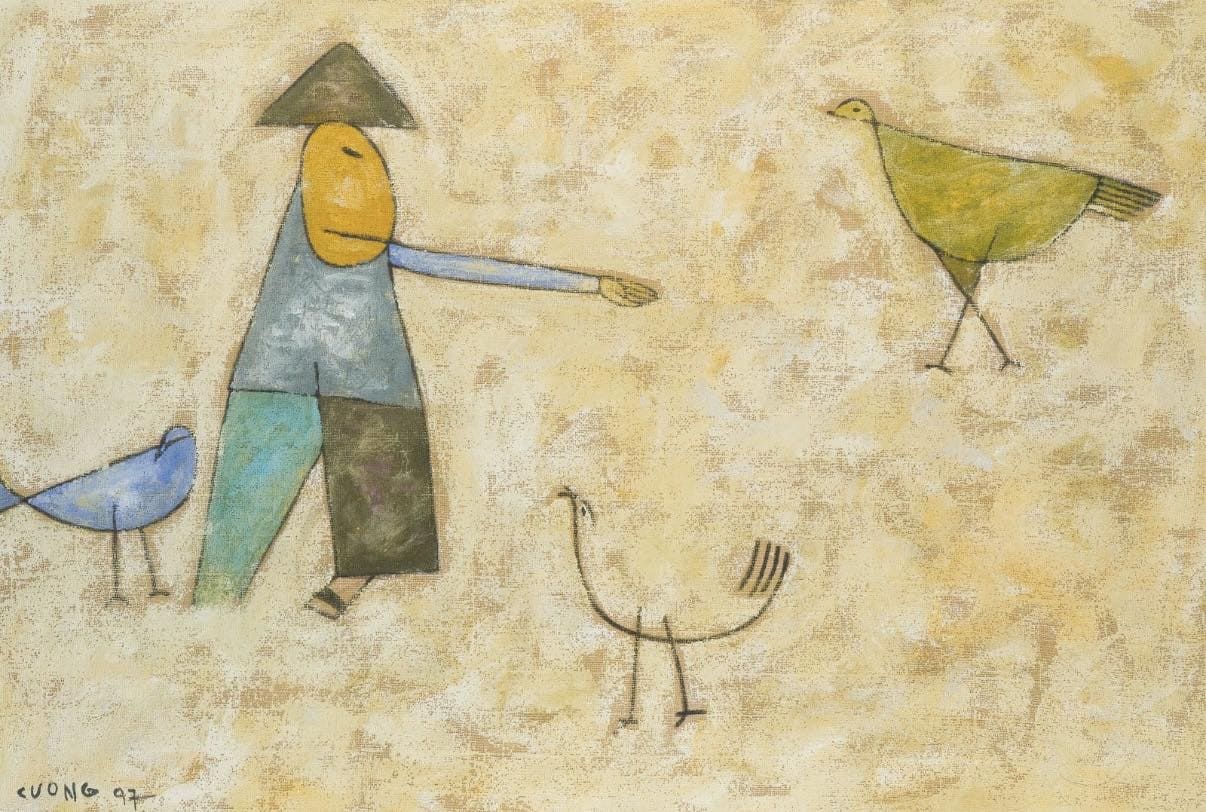
Through the biography of Lê Thiết Cương, we witness an artist in perpetual learning—from military barracks to his intimate gallery, from canvas to page. It is a narrative of steadfastness, where art is not a mere livelihood but the very breath of existence. His story resonates as a blueprint for aspiring creators, illustrating how personal trials can fuel artistic evolution in Vietnam’s dynamic cultural milieu.
Artistic Style of Lê Thiết Cương: Minimalism as a Philosophy of Life
The artistic style of Lê Thiết Cương is akin to a personal signature—minimalist, profound, and steeped in Eastern philosophy. It emerged not by design but through a natural convergence with his inner self, as he once shared: “An artist seeks themselves, much like a practitioner returns to their true form.” This ethos, rooted in Zen and Vietnamese introspection, distinguishes his work in a crowded contemporary scene, where excess often overshadows essence.
Origins and Characteristics of the Minimalist Style
The artistic style of Lê Thiết Cương crystallized from early influences. Mentor Đặng Đình Hưng guided him toward minimalism, where fewer strokes convey deeper meanings. He employs simple geometric forms, a restrained palette (often earth tones, grays, whites), evoking serenity yet lingering unease—a balance of void and presence. This approach draws from Zen aesthetics, emphasizing negative space as a canvas for viewer interpretation, much like traditional ink wash paintings but modernized for urban sensibilities.
- Minimalism Without Extremism: Cương’s restraint is deliberate yet accessible; he layers subtle textures—faint washes or etched lines—to hint at narratives without overwhelming. This philosophy extends to ceramics, where he inscribes Zen poetry or excerpts from writer Nguyễn Huy Thiệp, merging visual and literary minimalism into tactile experiences.
- Eastern Roots with Modern Twists: Influenced by Vietnamese literati traditions and global abstraction (echoes of Mark Rothko or Agnes Martin), his works transcend decoration, inviting contemplation on transience and identity.
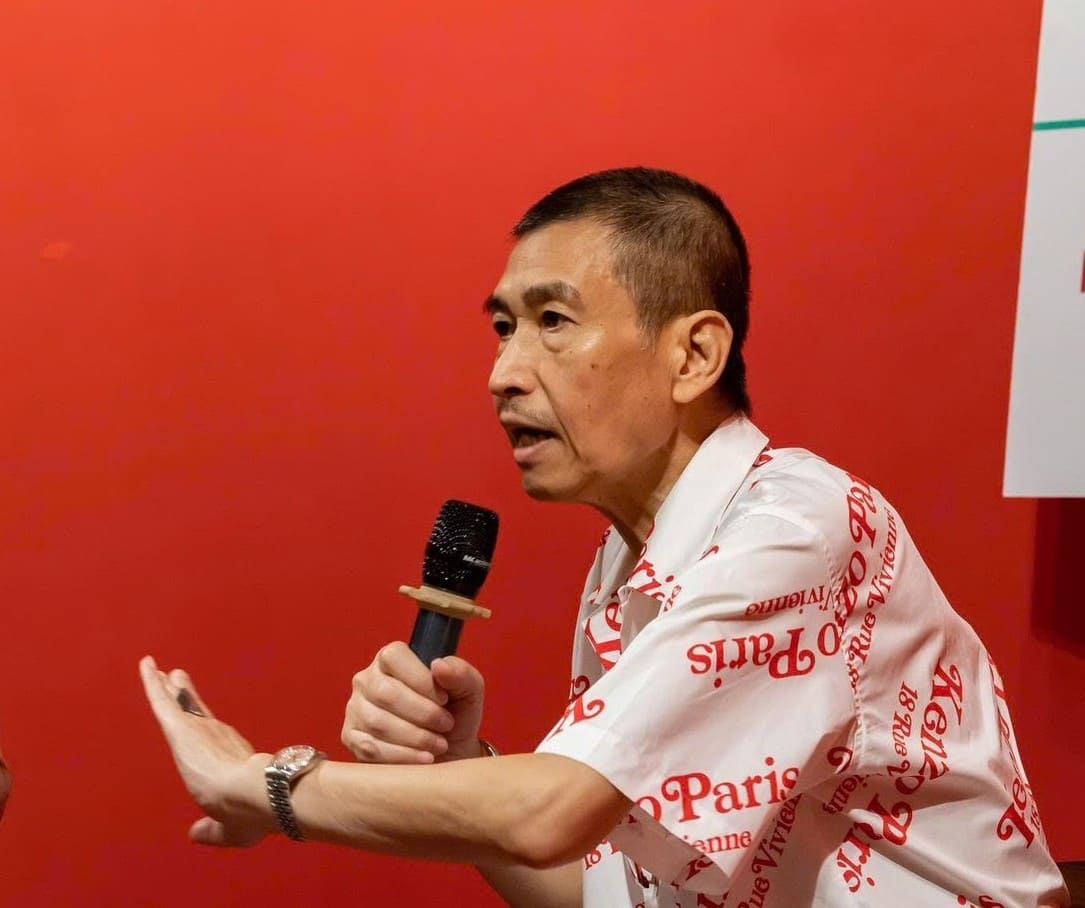
Influence of Lê Thiết Cương’s Artistic Style on Contemporaries
As a vanguard of abstraction and minimalism in Vietnamese painting, Lê Thiết Cương profoundly impacted younger artists. He fearlessly experimented—from oil on mosquito netting to modern ceramics in his 2020 Kinh Gốm exhibition—pushing boundaries while honoring heritage. His style, which finds beauty in urban chaos through simplicity, has reshaped perceptions of “beauty” in Vietnam, encouraging restraint amid a surge of figurative excess.
In the contemporary art ecosystem, the artistic style of Lê Thiết Cương serves as a reminder: Less is more. He networked with writers and musicians but maintained boundaries to safeguard creative purity. “Fame brings convenience but also humiliation,” he mused—a poignant advisory for emerging talents navigating Vietnam’s evolving market. This influence extends beyond Vietnam; his works in international collections highlight how local philosophies can dialogue with global modernism.
His style permeates writing too. In Thấy (Seeing, 2017), he dissects art as conversation, urging readers to “see” rather than merely observe. As a silent mentor, Cương’s legacy fosters a generation prioritizing introspection over spectacle.
Representative Works of Lê Thiết Cương: Masterpieces Reflecting the Self
The representative works of Lê Thiết Cương transcend paintings; they are life narratives—from Hanoi vignettes to abstract emotions. With hundreds of pieces and countless exhibitions, his diverse collection is approachable yet layered, inviting endless discovery.
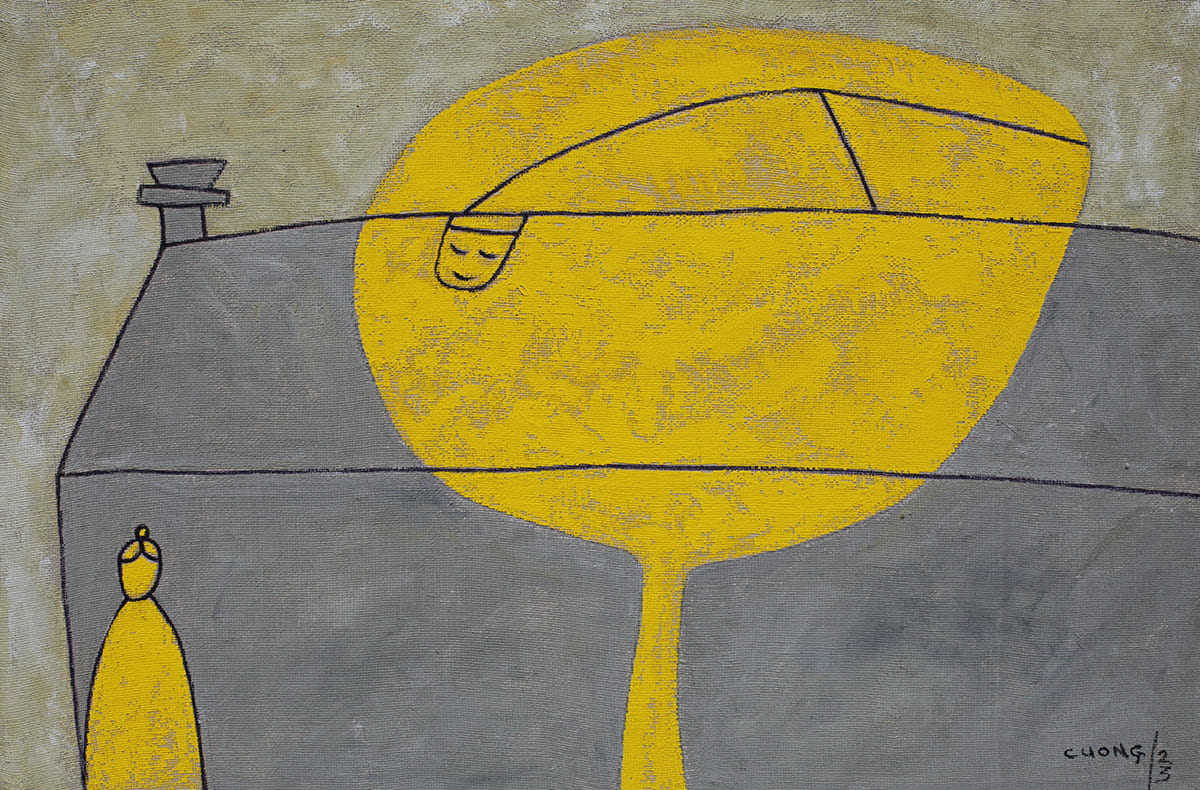
The “From Beginning to End” Series: A Personal Emotional Journey
Among the representative works of Lê Thiết Cương, the Từ Đầu Đến Cuối (From Beginning to End) series stands out, exploring life’s minimalism. Drawing from personal reflections, it uses stark lines to narrate from birth to death—a Zen-infused meditation on existence.
- Key Features: Sparse colors, focusing on human forms amid voids, evoking solitude yet liberation. Each canvas feels like a haiku—concise, evocative.
- Influence: Frequently featured in Cương’s exhibitions like Duyên (Fate, 2024), it captivates collectors for its personalization, blending autobiography with universal themes.
This series exemplifies Cương’s narrative prowess, where absence speaks volumes, resonating with viewers navigating modern alienation.
Works on Hanoi: “Red River” and “Hanoi Street Corners”
Cương’s love for Hanoi infuses his representative works like Dòng Sông Hồng (Red River)—a series inspired by the culturally symbolic waterway.
- Dòng Sông Hồng: Gray-blue tones and curving strokes symbolize time’s flow, connecting personal memory to collective heritage. Exhibited widely, it captures Hanoi’s soul amid urbanization.
- Góc Phố Hà Nội (Hanoi Street Corners): Vibrant yet pared-down depictions of bustling to serene alleys, highlighting everyday poetry through minimalist lenses.
These pieces evoke nostalgia, allowing viewers to rediscover themselves in old Hanoi, bridging personal and communal histories.
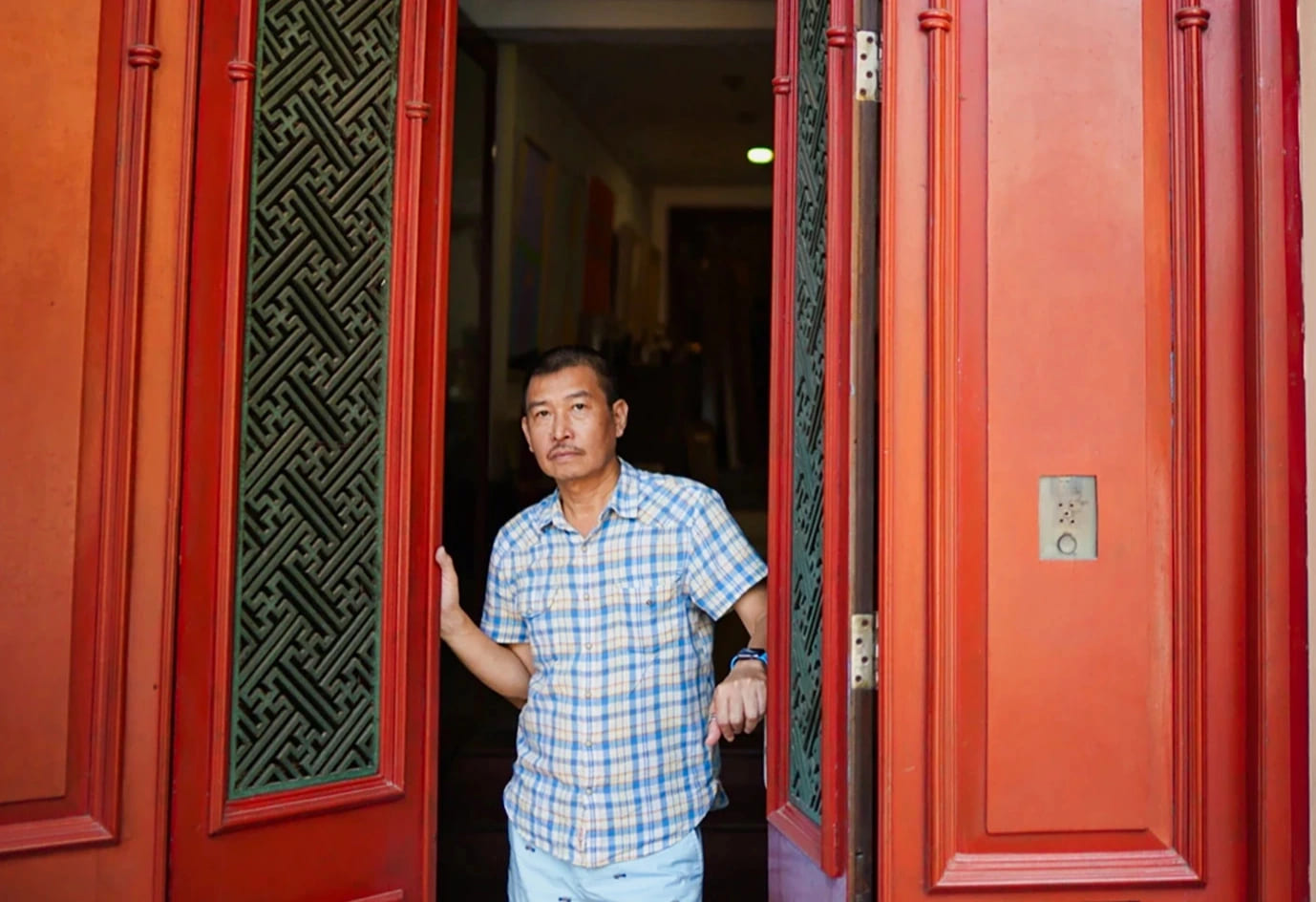
Abstract and Portrait Works: Self-Portraits and Inner Emotions
Representative works of Lê Thiết Cương also encompass self-portraits and portraits—sharp, honest renditions of subjects. His abstract series, like Bến Lạ (Strange Shore, inspired by Đặng Đình Hưng’s poetry), conveys emotions through ambiguous forms.
- Self-Portraits: Reveal the artist’s modest, introspective self—raw and resonant.
- Portraits: Avoid idealization, capturing essences like those of fellow artists, with subtle psychological depth.
Beyond canvas, Cương’s books—Trò Chuyện Với Hội Họa (Conversations with Painting, 2025) and Tiếng Chợ (Market Voices, 2025)—are literary masterpieces, “painting” with words in his signature economy.
Through these representative works of Lê Thiết Cương, we encounter ceaseless innovation—from paintings to ceramics, personal to cultural realms—each a testament to his exploratory spirit.
Exhibitions of Lê Thiết Cương: Milestones in His Career
Exhibitions of Lê Thiết Cương testify to his style’s vitality. From solo shows to international venues, they narrate his odyssey, fostering artist-audience dialogues.

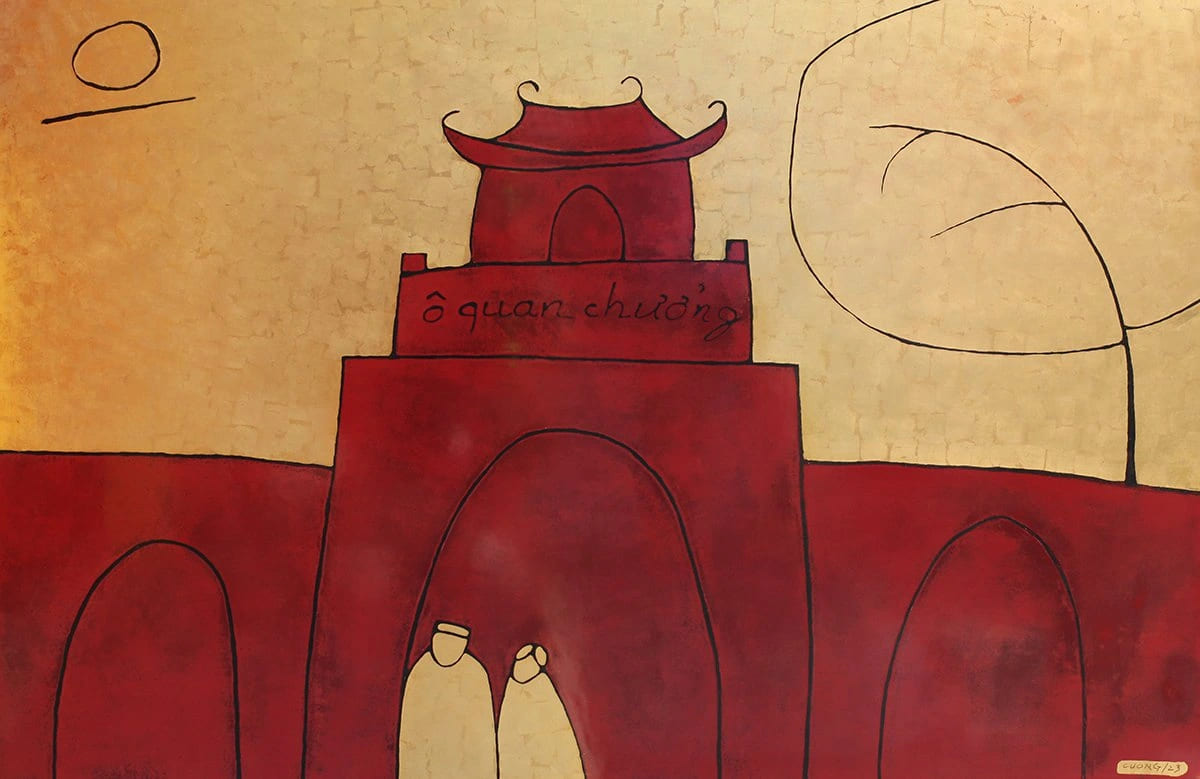
Prominent Exhibitions and Their Significance
- Duyên (Fate, 2024): In Ho Chi Minh City, featuring Độc Thoại (Monologue), it drew thousands, emphasizing minimalism’s emotional pull. Curated personally, it showcased recent ceramics etched with poetry, blending tradition and abstraction.
- Kinh Gốm (Ceramics Capital, 2020): Merging Zen verses on pottery, it preserved heritage through modernity, earning acclaim for innovative materiality.
- Bến Lạ (Strange Shore): Rooted in his mentor’s poetry, it honored gratitude, with ethereal abstracts evoking liminal spaces.
Cương’s exhibitions, often at his gallery or grand spaces, bridged creators and publics, with over 26 solo shows domestically and abroad—testaments to his global resonance. They weren’t mere displays but immersive experiences, where viewers engaged with his philosophy through guided reflections.
Legacy of Lê Thiết Cương: Indelible Influence on Vietnamese Painting
The legacy of Lê Thiết Cương extends beyond canvases—it’s the minimalist ethos urging youth to seek self-identity. Posthumously, his works are avidly collected, books reprinted, and memorial exhibitions planned.
- Impact on Contemporary Art: Pioneering abstraction, he redefined “beauty” in Vietnam, shifting from ornate to essential.
- Cultural Value: Through writing, he imparted lessons on authentic artistry.
- Post-2025 Remembrances: His departure ignited tributes, with Tiếng Chợ as a warm farewell, evoking market life’s poetry.
Lê Thiết Cương was more than an artist; he was a mentor, friend to creation. His legacy whispers: Art lies in simplicity’s infinity.
Concluding this journey, Lê Thiết Cương gifts a beautiful world where minimalism unlocks boundless depths. For painting enthusiasts, immerse in his works—you’ll find yourself therein. His influence persists in Vietnam’s art discourse, inspiring hybrid forms that honor roots while embracing innovation, ensuring his voice echoes in future galleries.

